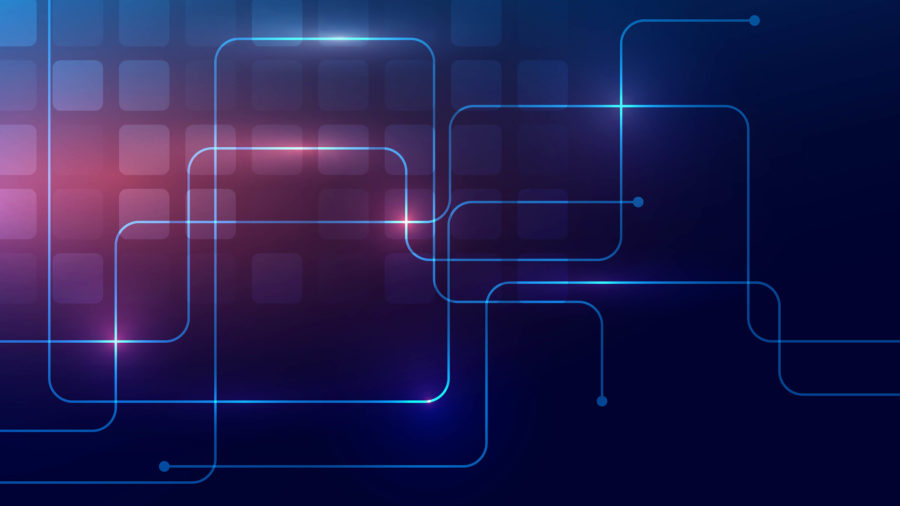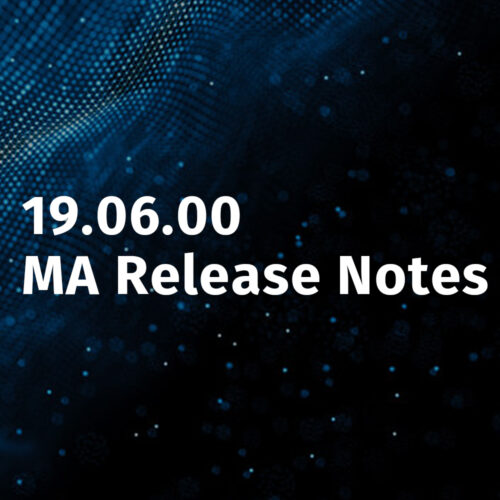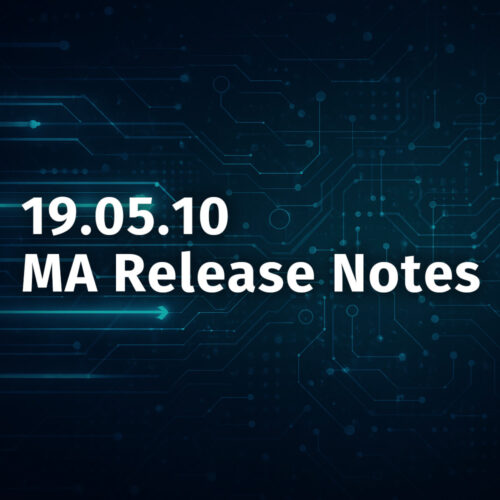Release Date: October 24, 2022
Release Overview
As part of our ongoing effort to improve and expand IP management, the Device42 v18.03.00 Main Appliance release includes new visibility for IPs associated with more than one device and a new Auto Clean rule to help manage these associations. Device42 v18.03.00 also includes enhanced display of changes on the Affinity Group chart canvas and new and improved Insights+ dashboards.
IP and Multiple Device Association
Device42 v18.03.00 can now return information about IP addresses that are associated with more than one device. The IP list page now includes a Devices column that displays the device or devices (in comma-separated format) associated with an IP. You can also use the IP edit page to add or delete devices associated with an IP.
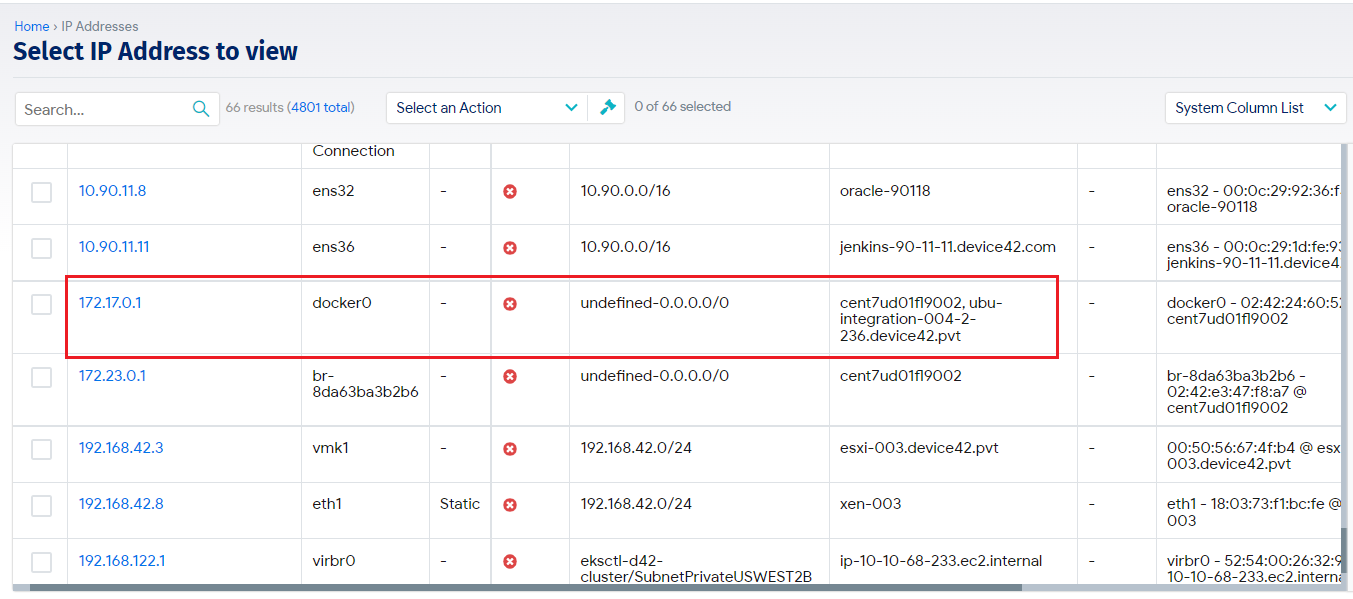
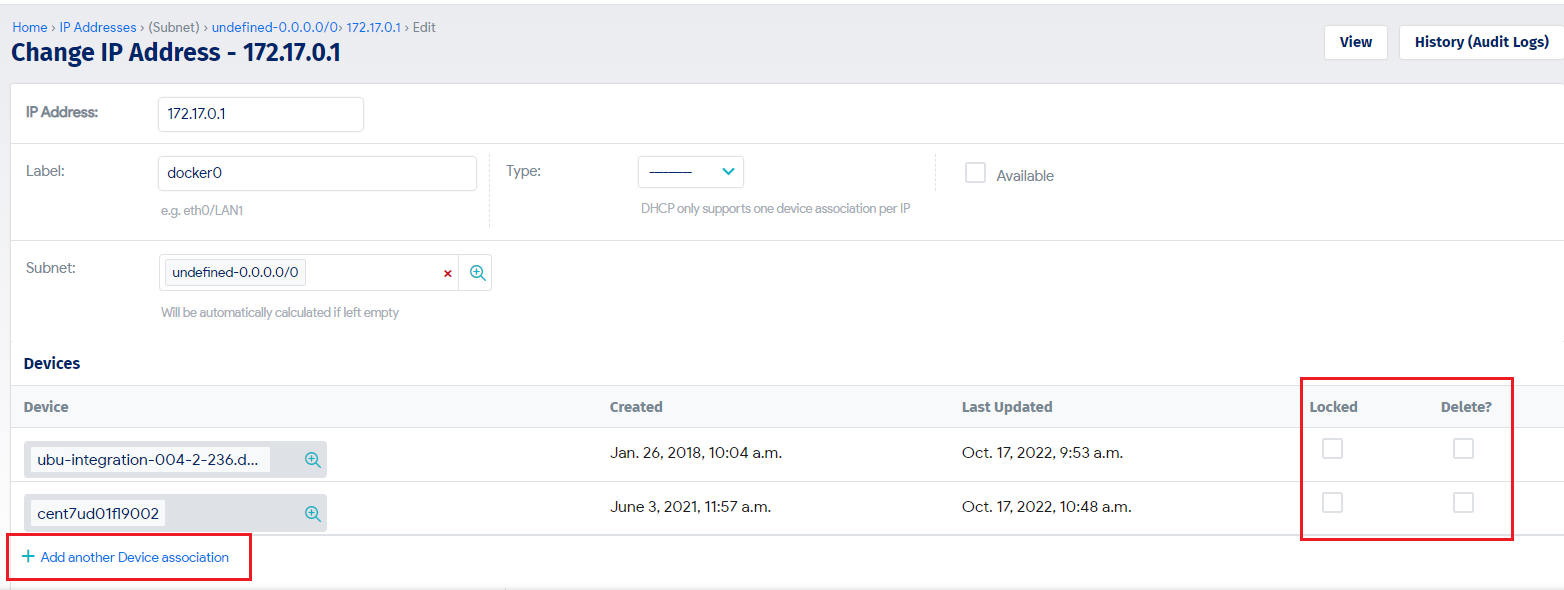
New Auto Clean Rule for IP/Device Associations
Device42 v18.03.00 includes a new system Auto Clean Rule that removes the associations between IPs and devices if any associated IPs are not discovered for a specified amount of time (with a default setting of 30 days). The Auto Clean rule runs nightly, and you can increase or decrease the time setting.
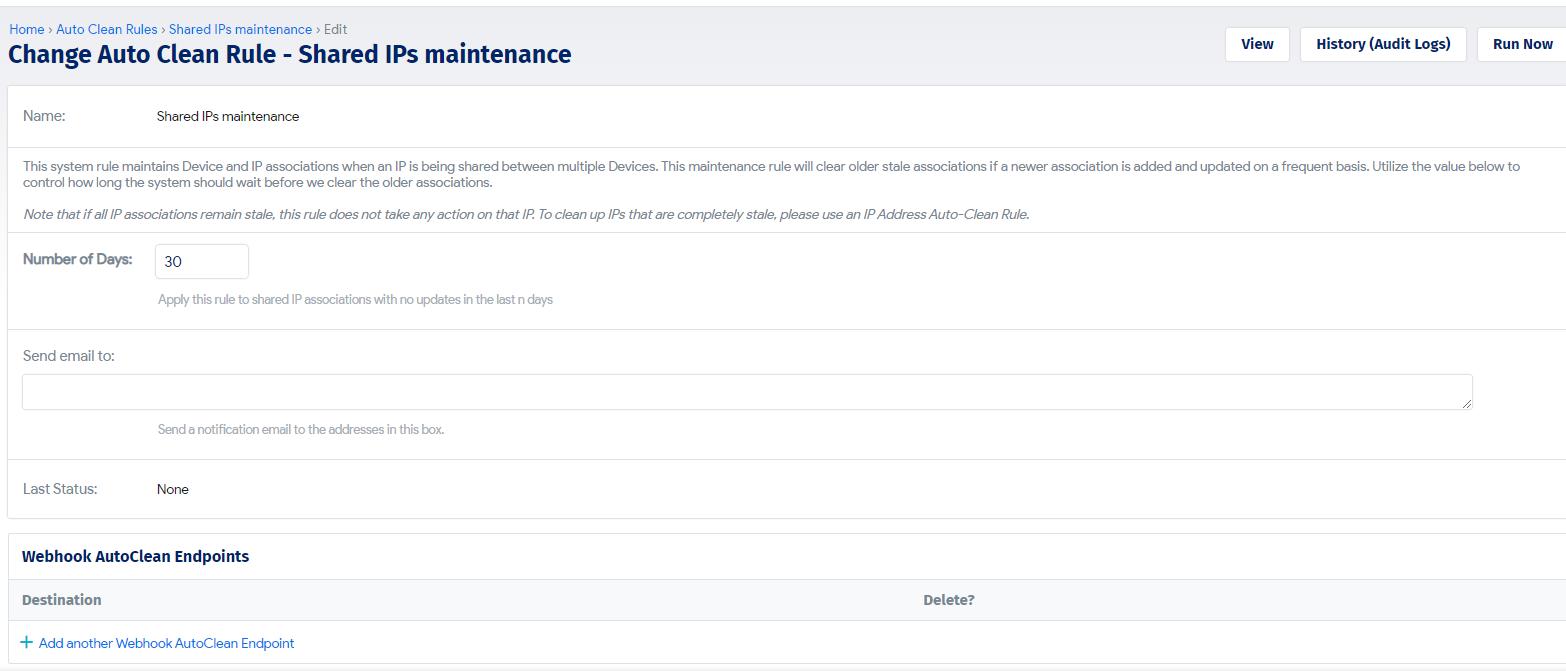
Affinity Group Timeline Change Description Panels
Affinity Group chart timelines now display a pop-up panel showing changes to the Affinity Group at that point. Click on a vertical point in the timeline at the bottom of the chart to see a summary of changes. Click Show Details to see more information about the changes.
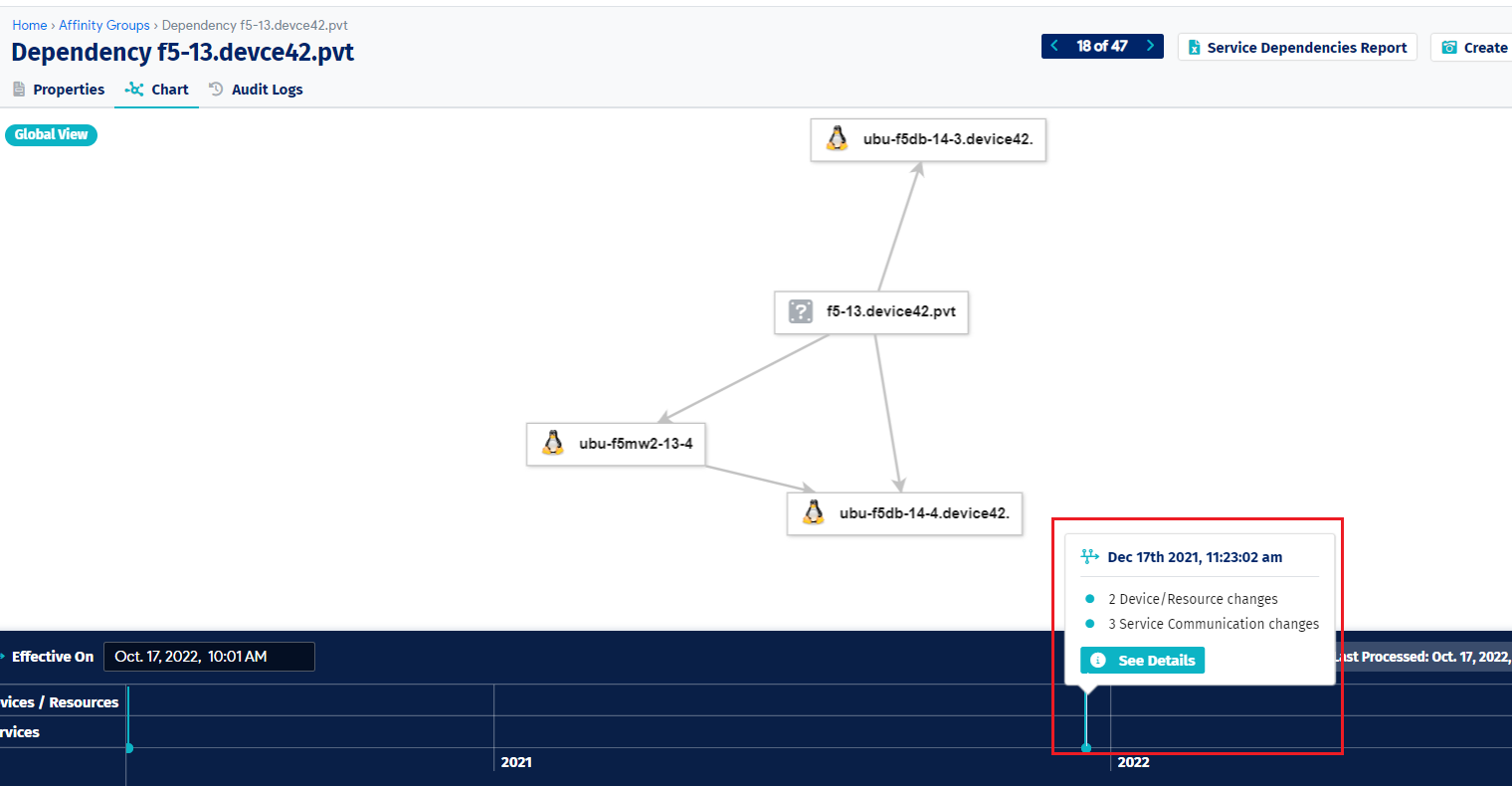
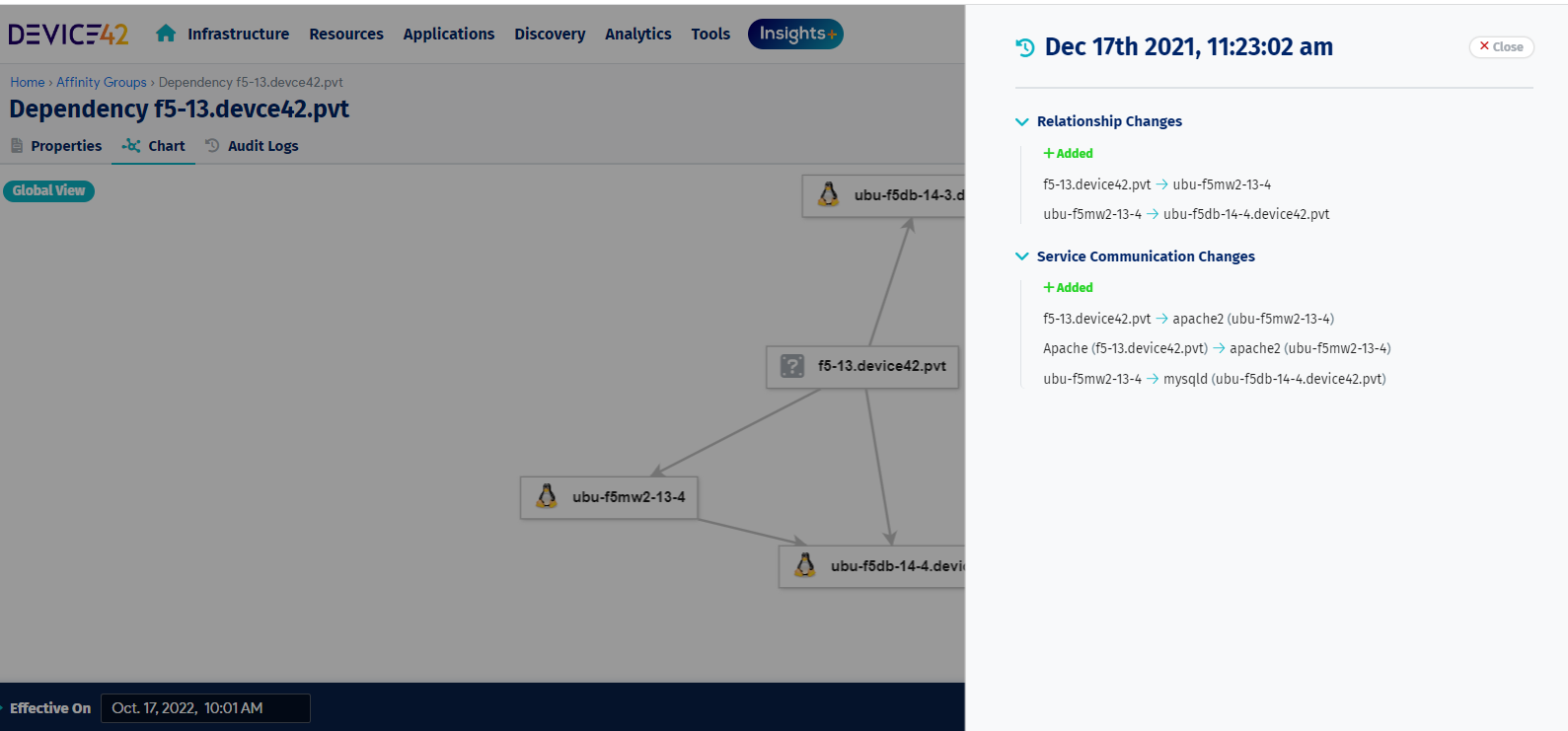
New Data Building Block (DBB) ADM Business Application Composition
The Business App Composition DBB contains a breakdown view of Business Applications and their device dependencies. This DBB can be combined with other DBBs to aggregate data such as Compute capabilities and Security risks and assess impact on business applications.
Current data provided includes:
- PDU Infrastructure and devices that are connected to them.
- Network Devices and connectivity the business app relies on.
- Virtual and Physical Hosts on which the business app infrastructure relies.
- Application Servers and components underneath them that impact the business application.
- Affinity Group relationships for business app infrastructure.
- Virtual Storage Disks on Arrays that impact business app infrastructure.
Improved Performance for Insights+ Business App Composition Dashboard
Device42 v18.03.00 includes a change to the Insights+ Business App Composition dashboard. The dashboard is now based on the new DBB. This drastically improves performance of the dashboard.
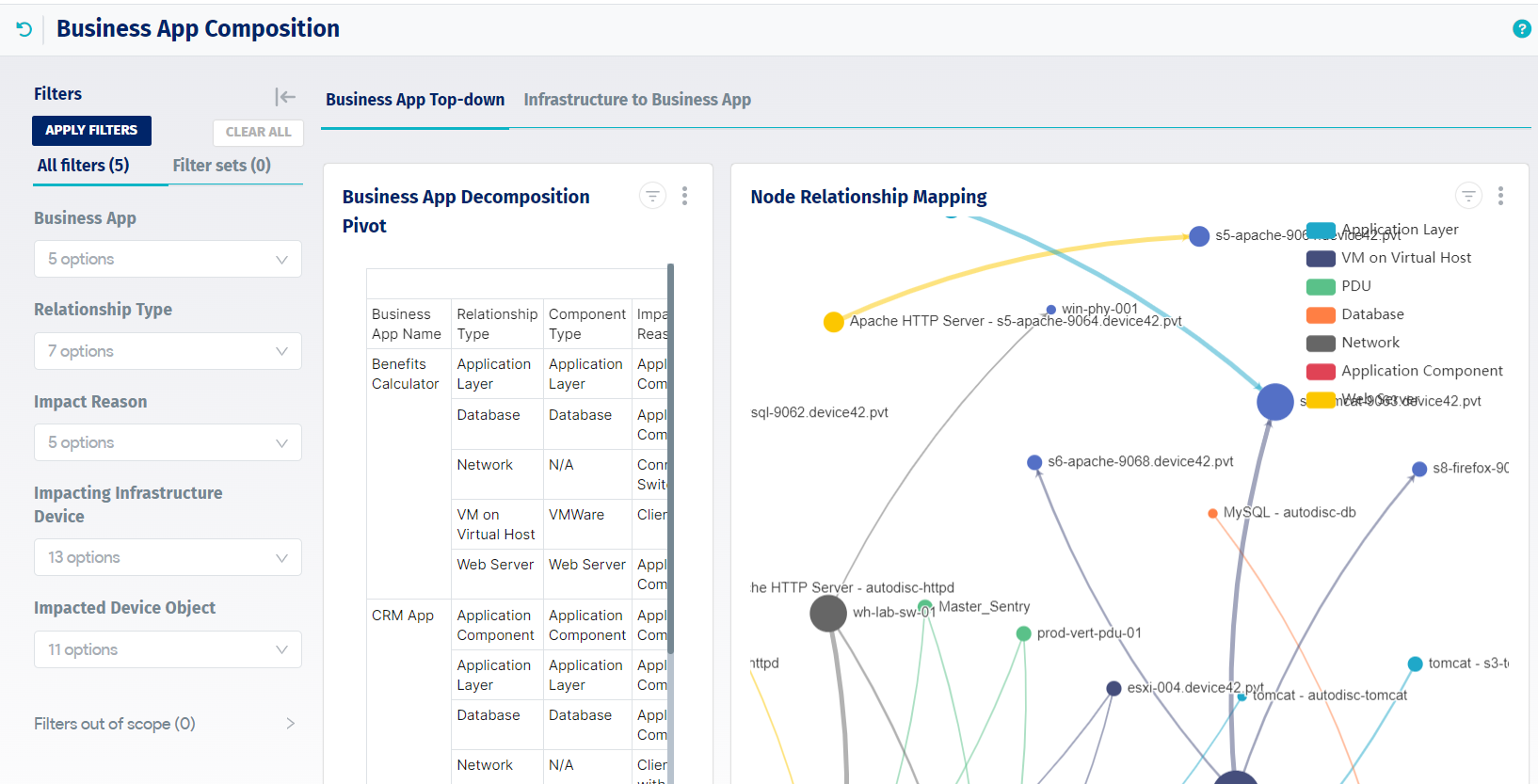
Improved Detail Reports for Insights+ Compute Dashboard
The Memory and CPU Utilization Details reports now include Time Window and Metric columns. The Detail reports also include links (in blue) back to Device42 for the Devices.
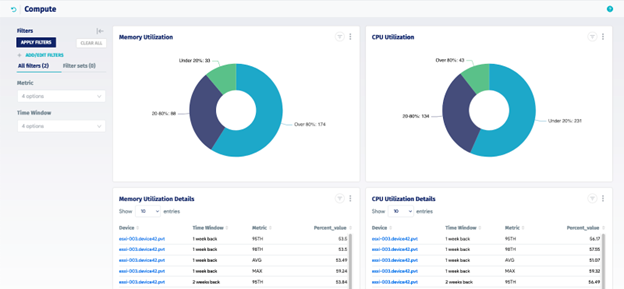
Improved Detail Reports for Insights+ Physical Compute Dashboard
The Physical Compute dashboard Detail reports now include links (in blue) back to Device42 for the Devices.
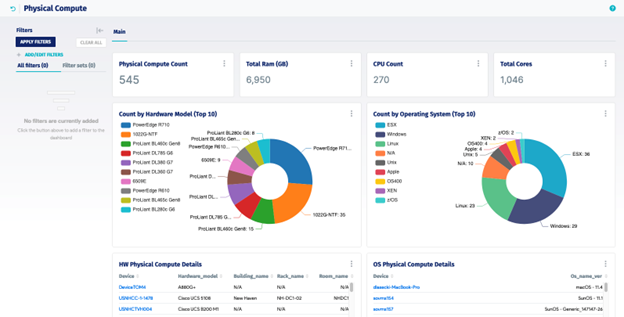
ADM Sampling and Resource Utilization Tracking Options Enabled for Discovery Jobs
For discovery jobs types that include these options, the ADM Sampling Interval option and the Enable Resource Utilization Tracking for Device(s) option are now selected and enabled by default. Note that you must select a Remote Collector to display these options, and you can disable them if you want or change the interval.
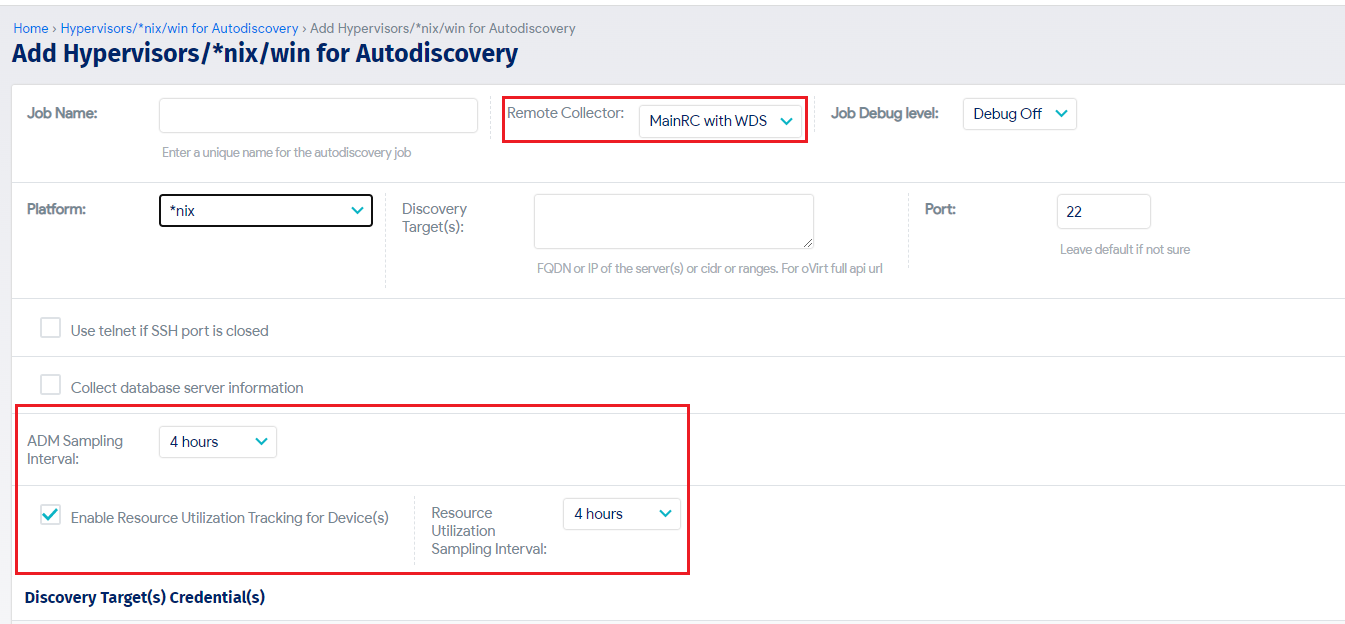
Kubernetes Visibility Enhancements
Customers need to be able to better understand the relationship between their Kubernetes applications and their dependencies. To this end, we’ve connected Kubernetes ingress rules into service ports and service communications.
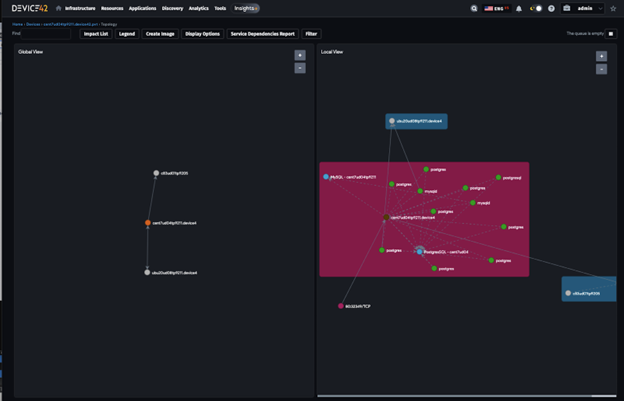
SNMP Discovery with All Versions
Many customers have subnets which contain devices on all three SNMP versions, requiring the creation of many different jobs in order to successfully run. With the changes we have now implemented, customers can enter the credentials in the order they would like discovery to attempt, stopping at the first successful authentication. Auth failure troubleshooting and reporting can then be streamlined.

Windows Discovery Stability Improvements
To ensure you have the best possible Windows discovery experience, we have set a limit for the number of concurrent WMI calls that can be made across all jobs for WDS. This will prevent WDS from failing when trying to process too many jobs. When more than sixty four jobs are started, the sixty fifth job and above will be placed in queue until others have finished.
Autodiscovery of AWS S3 Bucket Environments
Please be aware that autodiscovery jobs for AWS environments that include multiple S3 buckets or high bucket content will take longer to complete than previously expected.
v18.03.00 Cut Off Release Notice
Device42 v18.03.00 is an upgrade cut off release. We are taking this step to reduce the size of our upgrade package. All customers will be required to upgrade to v18.03.00 to be able to apply future releases going forward.
Bug Fixes
- Resolved an issue in which the API GET call used to return device attachments was not working correctly.
- Resolved an issue in which adding a port to an existing device did not save the port data.
- Resolved an issue in which some discovery jobs sometimes did not complete due to object errored out conditions.
- Resolved an issue in which AWS Kubernetes discovery using AWS Roles was sometimes not completing correctly.
- Resolved an issue in which the Insights+ Business App Composition dashboard was sometimes not loading correctly.
- Resolved an issue in which the Database Details report was sometimes not generating successfully.
- Resolved an issue in which KVM/Libvirt autodiscovery sometimes incorrectly detected running VMs as not in service.
- Resolved an issue in which the Workload Details > IBM Z pre-defined report was sometimes failing.
- Resolved an issue in which moving subnets in or out of VRF groups was sometimes not working correctly.
- Resolved an issue in which loading Affinity Group charts sometimes generated error and did not succeed.
- Resolved an issue in which VMware discovery was sometimes not correctly returning Resource Utilization data.
- Resolved an issue in which IBM z/OS autodiscovery was sometimes failed due to credential errors.
- Resolved an issue in which Cisco ASA firewall discovery was sometimes not completed successfully.
- Resolved an issue in which users were sometimes getting erroneous high memory usage errors when editing secrets.
- Resolved an issue in which the backup and restore process sometimes incorrectly reverted to an old expired license.
Latest Device42 Update
Current customers, grab the latest update file @ /update/.
If you haven’t tried Device42 yet, download a 30-day free trial!

